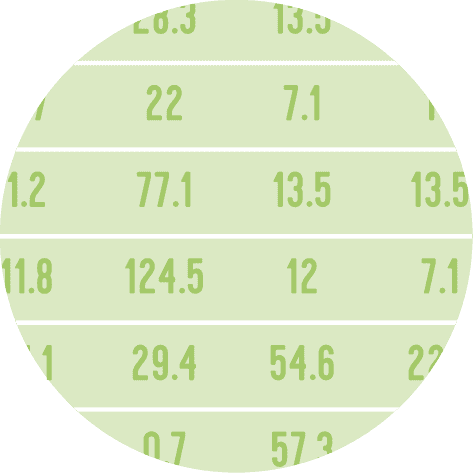Libraries
Pandas is a popular open-source Python library used for data manipulation and analysis. It provides data structures and functions that make working with structured data, such as tabular data (like Excel spreadsheets or SQL tables), easy and intuitive.
To install Pandas, you can use the following command in your command-line interface (such as Terminal or Command Prompt):
pip install pandas
Matplotlib functionalities have been integrated into the pandas library, facilitating their use with dataframes and series. For this reason, you might also need to import the matplotlib library when building charts with Pandas.
This also means that they use the same functions, and if you already know Matplotlib, you'll have no trouble learning plots with Pandas.
import pandas as pd
import matplotlib.pyplot as pltDataset
In order to create graphics with Pandas, we need to use pandas objects: Dataframes and Series. A dataframe can be seen as an Excel table, and a series as a column in that table. This means that we must systematically convert our data into a format used by pandas.
We generate 3 variables: 2 quantitative using np.random.uniform() and np.random.normal() functions and one qualitative, whose values depend on the values of the first qualitative variable.
data = {
"Product": ["Product A", "Product A", "Product A", "Product B", "Product B", "Product B"],
"Segment": ["Segment 1", "Segment 2", "Segment 3", "Segment 1", "Segment 2", "Segment 3"],
"Amount_sold": [100, 120, 120, 80, 160, 150]
}
df = pd.DataFrame(data)Simple stacked barplot
Once we've opened our dataset, we'll now create the graph.
This dataset represents sales data for different products (Product A and Product B) across various segments (Segment 1, Segment 2, and Segment3). The "Amount_sold" column represents the quantity of each product sold within each segment.
The pivot() function is used in this context to reshape the original DataFrame into a format suitable for creating a grouped barplot. In a grouped barplot, you typically want each category (in this case, each product) to have its own set of bars grouped by another categorical variable (in this case, the segments).
Then, we put stacked=True in order to specify that we want the bars on top of each others
# Pivot the data to have 'Product' as columns and 'Segment' as the index
pivot_df = df.pivot(index='Segment',
columns='Product',
values='Amount_sold')
# Create a grouped barplot
pivot_df.plot.bar(stacked=True,
grid=True)
plt.show()Stacked barplot 100%
In order to make the graph 100% stacked, we have to modify the original dataset so that everything has the same scale and the sum faces 100%. We use the div() function from pandas.
# Pivot the data to have 'Product' as columns and 'Segment' as the index
pivot_df = df.pivot(index='Segment',
columns='Product',
values='Amount_sold')
# New dataframe with values on a 100% scale
pivot_df_percentage = pivot_df.div(pivot_df.sum(axis=1), axis=0) * 100
# Create a grouped barplot
pivot_df_percentage.plot.bar(stacked=True,
grid=True)
# Add a legend
plt.legend(bbox_to_anchor=(1.04, 1), # shift the legend 4% on the right
loc='upper left')
# Display the plot
plt.show()Going further
This post explains how to create a stacked barplot with pandas.
For more examples of how to create or customize your barplots, see the barplot section. You may also be interested in how to customize your barplot with pandas.






